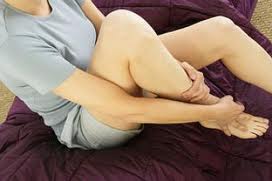Restless legs syndrome (RLS) is a disorder of the part of the nervous system that affects movements of the legs. People with RLS have strange sensations in their legs (and sometimes arms) and an irresistible urge to move their legs to relieve the sensations. This syndrome happens even when the patients go to bed. Consequently, it often causes sleep deprivation.
To combat the irritating problem, you can try ten following tips at home:
Stroll: If you cannot sleep at night because of RLS, get up and walk. That may calm your legs to keep them still when you go back to bed.
Cut out caffeine: Do not consume caffeine-containing intake such as coffee, tea, chocolate, sodas, and even over-the-counter (OTC) medications.
Avoid tobacco and alcohol: because tobacco and alcohol can have detrimental effects on sleep.
Have a bath before bed: A warm bath or massage before bed can relaxes muscles, which is helpful for your sleep.
Change your temperature: Sometimes try putting a heating pad or hot pack on your legs for a short while. Or drape a cool towel over your legs, or dip your feet in cool water. A change from hot to cold, or cold to hot, can do the trick.
Have a healthy diet: A deficiency in iron, folate, or magnesium may contribute to restless legs syndrome. So eat a wide variety of nutrient-rich foods so that you can get enough vitamins and minerals.
Form a bedtime habit: A regular bedtime routine will help your mind and body settle down and prepare for bed. Moreover, that may help you avoid the fatigue that could be a contributing factor to restless legs syndrome.
Do exercise: Regular and moderate exercise such as walk or some form of relaxation technique can de-stress and help you. However, remember that excessive exercise can aggravate restless leg symptoms.
Stretch your legs before bed: Try stretching your calves, hamstrings, and gluteal (butt) muscles before bed.
Wear socks to bed: A lot of people with restless legs syndrome seem to have cold feet. So bundle up your tootsies for the night may be helpful.

